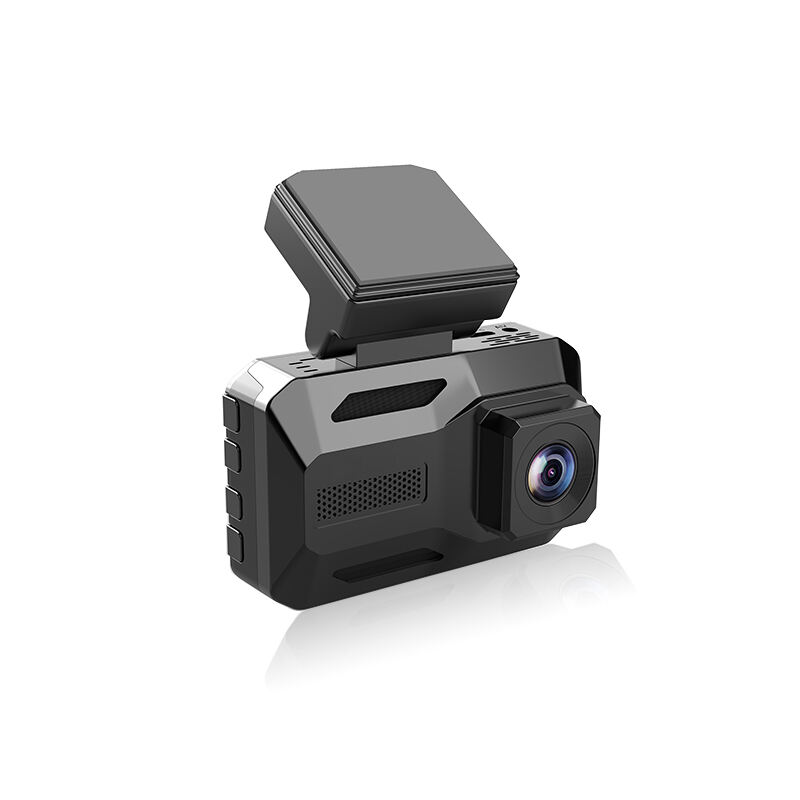The New Standard in Road Awareness
In an era where road safety merges with smart technology, ADAS Dashcams have become a cornerstone for drivers seeking enhanced awareness and protection. These devices combine continuous video recording with active alerts to help drivers recognize hazards earlier and respond more effectively. ADAS Dashcams offer a pragmatic blend of evidence capture and proactive assistance that complements driver attention on every trip. By integrating vision-based sensing with intelligent processing, ADAS Dashcams transform raw footage into actionable safety guidance that can be applied to everyday driving, long-distance travel, and commercial operations.
Key Features of ADAS Dashcams
Active Safety Alerts
One defining characteristic of ADAS Dashcams is real-time alerting. Lane departure warnings, forward collision alerts, and pedestrian detection are common features that prompt drivers to take corrective action. Some advanced units also detect cyclist proximity and blind-spot encroachments, giving drivers a broader sense of nearby vulnerabilities. Carefully tuned alert thresholds help ADAS Dashcams strike the right balance between safety and nuisance reduction.
Recording and Data Capture
Beyond alerts, ADAS Dashcams record video with timestamps, GPS, and sensor metadata. This comprehensive data capture helps reconstruct events and supports faster resolution of disputes. When an impact happens, the device typically locks serious-event clips so they are preserved for review or insurance claims. In addition to raw footage, ADAS Dashcams often maintain a log of alerts and system states, which adds valuable context to recorded events.

How ADAS Dashcams Work
Sensors and Machine Vision
At the heart of ADAS Dashcams are cameras and onboard vision algorithms. High-resolution image sensors capture frames while machine learning models analyze patterns to detect vehicles, pedestrians, road signs, and lane markings. ADAS Dashcams use trained models to classify objects and estimate motion, enabling context-aware alerts. Continuous improvement in model training and data diversity helps reduce biases and increase the range of scenarios ADAS Dashcams can handle well.
Sensor Fusion and Processing
Many ADAS Dashcams augment visual data with inertial sensors, GPS, and, in some advanced designs, radar inputs. This sensor fusion improves accuracy by cross-validating detections. Processing units on the device execute inference in real time so that ADAS Dashcams can issue timely warnings without cloud dependency. Edge processing has the added benefit of protecting user privacy, as sensitive video frames do not need to be streamed constantly to remote servers.
Benefits of Installing ADAS Dashcams
Accident Prevention and Driver Assistance
Do ADAS Dashcams actually make driving safer? Evidence and user reports suggest that drivers who receive consistent alerts adopt safer following distances and better lane discipline. ADAS Dashcams can reduce risky behaviors by providing immediate feedback and encouraging more defensive driving. For teen drivers and newer motorists, these systems serve as an on-road training aid that reinforces safe habits through repeated cues.
Evidence and Insurance Advantages
How helpful is recorded footage for claims and disputes? The video and associated metadata from ADAS Dashcams provide a precise account of events. Insurers and legal teams often accept such records as objective evidence, which can simplify investigations and accelerate settlements. ADAS Dashcams that include tamper-evident logs and authenticated timestamps strengthen the reliability of footage in formal proceedings. For fleet managers, these devices are tools for both risk mitigation and operational transparency.
Choosing the Right ADAS Dashcams
Feature Checklist
What should you look for in ADAS Dashcams? Prioritize reliable lane detection, robust pedestrian and cyclist recognition, and clear recording quality, especially in low light. Consider models that include parking mode, GPS tracking, and tamper-resistant logging. Regular firmware updates are also critical to maintain detection accuracy as algorithms improve. Additionally, check for flexible mounting options, compatibility with your vehicle, and the availability of mobile apps that make clip review and configuration user-friendly.
Performance and Testing
How does one evaluate real-world performance? Seek devices with independent test results, transparent detection metrics, and a history of firmware support. ADAS Dashcams vary in reaction latency, false positive rate, and night-time clarity—compare these factors when selecting a unit to ensure it meets your operational needs. Trial periods or return policies can be useful for buyers who want to validate performance under local driving conditions.
Installation and Calibration
Mounting and Power Considerations
Where you place an ADAS Dashcams affects performance. Mount the camera where it has an unobstructed view of the roadway and minimal lens occlusion. Hardwiring provides continuous power for parking surveillance, while plug-and-play options simplify installation. Evaluate power management features if you plan to use parking mode extensively. Use of external battery packs is an option to preserve vehicle battery life while maintaining extended monitoring.
Calibration and Firmware Updates
Proper calibration aligns detection zones and lane references with the vehicle's geometry. Many ADAS Dashcams offer guided calibration steps to streamline setup. Routine firmware updates are important to receive algorithm improvements and bug fixes that enhance the ongoing reliability of ADAS Dashcams. Keeping a device up-to-date also ensures compatibility with new features and improved detection models.
Performance and Reliability
Low-Light and Weather Performance
How well do ADAS Dashcams work at night or in bad weather? Units with larger sensors, high dynamic range, and noise-reduction algorithms typically perform better in challenging lighting. Waterproof housings and condensation-resistant designs help sustain reliable operation in adverse climates. Some ADAS Dashcams also use infrared illumination or advanced denoising to maintain clarity under low-light conditions.
Reducing False Alarms
Excessive false alerts can erode trust in any ADAS Dashcams system. Effective devices implement confidence thresholds, temporal confirmation, and multi-sensor corroboration to minimize nuisance warnings. Systems that learn from driver behavior and adjust sensitivity over time can further reduce false positives, helping drivers rely on the ADAS Dashcams without becoming desensitized.
Use Cases for ADAS Dashcams
Personal Vehicles and Commuters
For everyday drivers, ADAS Dashcams provide safety assistance that eases commuting stress. Parents monitoring teen drivers or drivers with long commutes benefit from in-vehicle alerts and reliable trip records. Does this translate into fewer accidents? Many drivers report improved situational awareness and fewer close calls after adopting ADAS Dashcams, thanks to consistent reminders that help correct risky patterns.
Fleet Operations and Commercial Use
What value do ADAS Dashcams bring to fleets? For commercial operators, these devices reduce liability, inform driver coaching programs, and support compliance documentation. Aggregated insights from ADAS Dashcams help identify risky behaviors and guide targeted training to improve safety across the fleet. When combined with telematics, the output from ADAS Dashcams contributes to broader operational analytics and performance optimization.
Privacy and Legal Considerations
Data Ownership and Access
Who owns the footage captured by ADAS Dashcams? Typically the vehicle owner controls recorded data, but corporate policies and local laws may affect access for fleet vehicles. ADAS Dashcams that support encrypted storage and role-based access help ensure that sensitive recordings are managed responsibly. Establishing clear policies for footage access and retention reduces confusion and potential misuse.
Audio Recording and Consent
Audio capture can complicate legal compliance. In jurisdictions where recording private conversations is restricted, disabling microphones or clearly informing occupants about audio recording mitigates legal risk. Manufacturers of ADAS Dashcams often provide configurable options for audio and data retention so users can tailor settings to local legal frameworks.
Integration and Ecosystem Compatibility
Telematics and Centralized Management
Integrating ADAS Dashcams with telematics platforms allows centralized monitoring and analytics. Fleet managers can combine vehicle health, routing, and dashcam alerts to gain operational insight. When ADAS Dashcams feed into a broader ecosystem, they contribute to proactive safety programs, predictive maintenance schedules, and route optimization.
Mobile Apps and Cloud Services
Many ADAS Dashcams include companion apps for quick clip review, firmware updates, and incident sharing. Cloud backups and encrypted transfer options make it easier to preserve critical footage off-device. However, consider subscription costs and data policies before committing, since some services require ongoing fees for remote storage and advanced analytics.
Installation Best Practices
Pre-Installation Preparation
Before installing ADAS Dashcams, select a location with a clear field of view, clean the windshield, and verify the camera angle. Confirm that the chosen unit supports your vehicle's electrical system and choose mounting hardware that minimizes vibration and obstruction. Planning these steps in advance streamlines installation and reduces the likelihood of calibration issues.
Post-Installation Verification
After setup, test alert behavior in a safe environment, verify GPS timestamps, and confirm that parking mode functions as expected. Regular verification ensures ADAS Dashcams remain reliable and aligned with changing vehicle conditions. Keep a short checklist to perform basic checks monthly or after any significant windshield work.
Maintenance and Longevity
Firmware and Software Maintenance
Staying current with firmware updates is essential for ADAS Dashcams to maintain detection accuracy. Periodically check for updates and follow vendor guidance to reduce the risk of software-related failures. Having a centralized update process is particularly important for fleets managing many devices.
Hardware Care and Lens Maintenance
Routine cleaning of the lens, inspection of mounts, and protection from extreme temperatures prolong device life. Proper care keeps ADAS Dashcams performing at peak capability and reduces interruptions in monitoring. Avoid harsh cleaners and handle connectors carefully to prevent accidental damage.
Buying Guide and Top Picks Strategy
Feature-First Recommendations
When evaluating ADAS Dashcams, prioritize core detection capabilities, video clarity, and reliable power management. For buyers seeking enhanced safety, select units with proven lane and object detection and robust logging options. ADAS Dashcams that balance intelligent alerts with clear evidence capture generally provide the best long-term value and peace of mind.
Budget and Value Choices
If budget is a concern, identify models that offer the essential ADAS functions without unnecessary extras. Many mid-range ADAS Dashcams provide solid performance and firmware support, representing strong value for individual drivers and small fleets. Look for devices with modular upgrade paths so you can add features later if needed.
Future Trends in ADAS Dashcams
Edge AI and On-Device Improvements
Advances in edge AI promise more sophisticated, lower-latency processing for ADAS Dashcams. Efficient neural models enable richer scene understanding without relying on cloud connectivity, enhancing privacy and responsiveness. These improvements make it feasible to detect subtler hazards and reduce dependence on remote servers.
Cooperative Systems and V2X Integration
As vehicle-to-everything connectivity expands, ADAS Dashcams may benefit from cooperative warnings broadcast by infrastructure and other vehicles. Such integration can extend detection beyond line-of-sight and lead to earlier hazard alerts in complex traffic scenarios. The potential synergy between ADAS Dashcams and connected infrastructure could unlock new safety use cases.
Practical Checklist for Buyers
Quick Purchase Checklist
Confirm core ADAS detection features, video resolution, low-light performance, and power solutions for parking mode. Verify that ADAS Dashcams offer firmware updates and secure data handling before finalizing a purchase. Consider accessory compatibility, such as rear cameras or specialized mounts, to build a system that meets your needs.
Installation and Testing Checklist
Plan for professional installation if you require hardwiring, and run initial verification drives to confirm lane detection, GPS accuracy, and alert behavior. ADAS Dashcams perform best when calibrated and maintained properly; document your testing so you have a reference for future troubleshooting.
FAQ
What is the main advantage of ADAS Dashcams?
ADAS Dashcams provide real-time alerts alongside continuous video recording, helping drivers detect hazards earlier and preserve detailed evidence of incidents.
Do ADAS Dashcams need a constant internet connection?
No, many ADAS Dashcams operate independently with on-device processing; internet connectivity is optional and typically used for cloud backup or remote monitoring.
How do ADAS Dashcams handle privacy concerns?
Manufacturers offer configurable settings such as disabling audio, encrypting storage, and managing retention policies. These options help users comply with local privacy laws and corporate governance requirements.
Are ADAS Dashcams worth the investment for fleet operators?
For fleets, ADAS Dashcams often deliver measurable benefits through reduced incidents, targeted training opportunities, and improved claims processing. The aggregated insights can lead to quantifiable safety and operational gains.
Table of Contents
- The New Standard in Road Awareness
- Key Features of ADAS Dashcams
- How ADAS Dashcams Work
- Benefits of Installing ADAS Dashcams
- Choosing the Right ADAS Dashcams
- Installation and Calibration
- Performance and Reliability
- Use Cases for ADAS Dashcams
- Privacy and Legal Considerations
- Integration and Ecosystem Compatibility
- Installation Best Practices
- Maintenance and Longevity
- Buying Guide and Top Picks Strategy
- Future Trends in ADAS Dashcams
- Practical Checklist for Buyers
- FAQ




